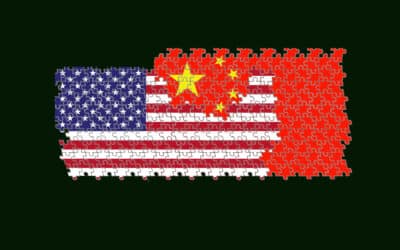We seem to forget that a tariff is a tax. It is formally levied on importers, not on foreigners or things, but since it can usually be passed along, it ends up as an indirect tax on consumers.
The point of tariffs is to protect certain domestic businesses and their employees from formidable foreign competitors by raising import prices and reducing consumer choices. Higher prices! Less choice! Raising import prices gives domestic businesses room to raise their prices — that’s the point. Why have a tariff otherwise? (Tariffs intended to raise revenue rather than protect domestic companies have been imposed in the past, but in those cases, the government wanted people to buy the imports or else no revenue would have been raised.)
To put it mildly, taxes are bad. They are the government’s way of taking money from people by force — stealing — and preventing them from spending it on their own purposes, activities that would have benefited others through production and trade. In a free society individuals are supposed to be at liberty to set and pursue their own goals. A society in which the government preempts individuals’ goals is not fully free.
Even if under some market circumstances importers and foreign exporters have to pay some of a tariff, it’s still an indirect tax on other Americans. Diverting money from importers and exporters to the government leaves them fewer dollars to spend or invest here. That’s an unseen loss. Was Trump, who promises new anti-China and universal tariffs, daydreaming when he attended the Wharton School all those years ago? What’s Biden’s excuse? He’s left most of Trump’s 2017-2020 tariffs in place.
Advocates of tariffs think the taxes will protect American businesses and jobs. But as Milton Friedman liked to remind us, there’s no such thing as a free lunch. Even if some jobs are preserved or even restored, it comes at a high price. And, as the radical liberal economist Frédéric Bastiat would say, the price is imposed on a large unseen group of people. That includes people who can least afford it. That’s not fair.
Because those forced to foot the bill are not readily identifiable, the overall cost of the tariffs is also unseen and hence unappreciated. Most of us have no sense of the damage the protectionists have done. One study estimated that a single round of Trump anti-China tariffs cost the “typical household” $831 a year. Even when some jobs are saved, the price per job is stupendously expensive. As Donald Boudreaux and Phil Gramm wrote in the Wall Street Journal (paywall), Trump’s tariffs to “close the ‘washing-machine gap’ … cost $815,000 per job saved, and … his steel tariffs … cost … more than $900,00 per job saved.” Think of the opportunities forgone! And remember, for semi-finished goods, some American companies’ output is other American companies’ input — meaning higher production costs than foreign companies face. (See “Who Really Pays the Tariffs? U.S. Firms and Consumers, Through Higher Prices.”)
Some people will argue that America’s astounding economic success in the 19th century is attributable to protective tariffs. The land of the theoretically free certainly had outrageous tariffs from the start. But beware of the post hoc ergo propter hoc fallacy (after this, therefore because of this). America had something else besides tariffs: largely free enterprise and low taxes inside a large free-trade zone. That’s a much better explanation; it has a solid theory behind it. (See Donald Boudreaux’s “Tariffs and Freedom.”) Slavery was the worst departure from classical liberal, or libertarian, principles, but there were other, though less monstrous departures. The tariff was one of them.
Slavery and the tariff had something in common. Both prevented people from freely doing what would do the most good for themselves and others. Through private property, free exchange, and the price system, unmolested markets tend to channel workers’ efforts and scarce resources to the activities that best accord with consumers’ and hence entrepreneurs’ most intense demands. Enslaved people, forcibly and cruelly barred from free labor markets, were forbidden to choose what they would have anticipated as their most rewarding work. That was one way in which slaves suffered, but the prohibition also made almost everyone else poorer than they would have been. How so? As Adam Smith showed in 1776, specialization through the division of labor makes us richer. The bigger the market, the better.
We got rid of slavery, thank goodness. When will we finally get rid of that other mark of tyranny: the tariff and other forms of protectionism? And when will we finally stop taking protectionist demagogues seriously?
































